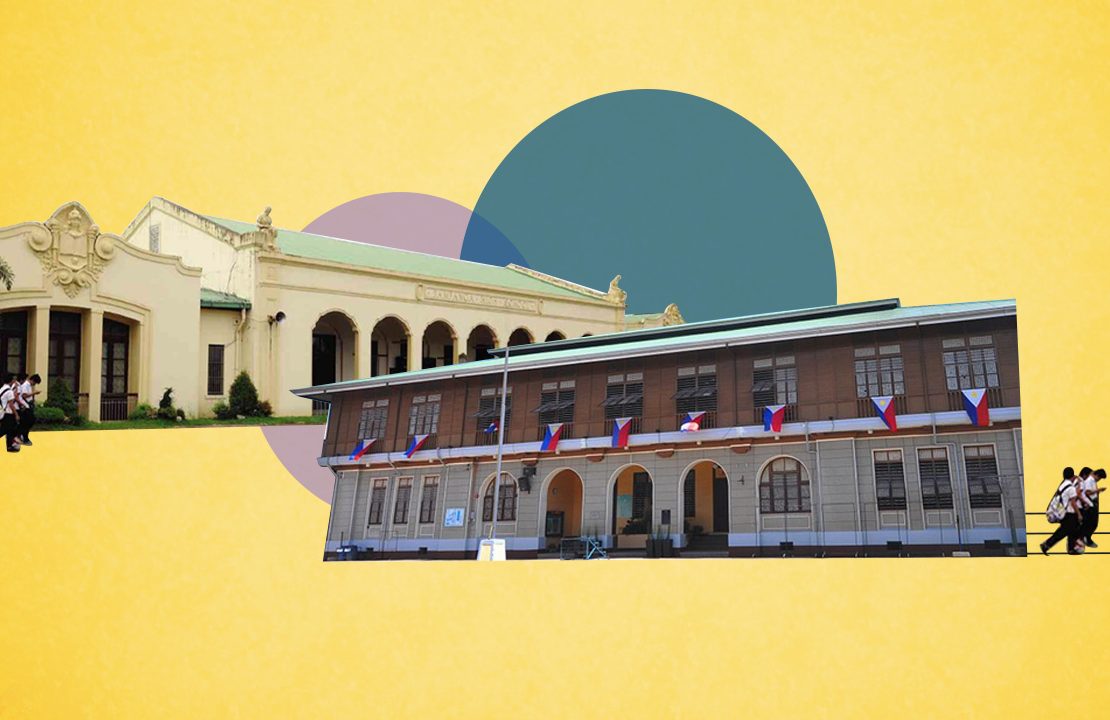Supporting cultural heritage isn’t easy. Every day, we’re faced with an onslaught of news about historic sites being torn down in favor of a new commercial building or to make way for a government project. And as much as I want to say that knowing all this charges us to do more, that doesn’t always work that way. Outrage burns you out.
I mention this in honor of Isauro Gabaldón, a man who staunchly called out for Filipino independence from America until doing so burnt his political spirit (he died before we gained independence). On Jan. 18, President Rodrigo Duterte signed into law Republic Act No. 11194 or the Gabaldon School Buildings Conservation Act, which will protect the school buildings named after Gabaldón. The law wouldn’t just implement conservation measures to protect the buildings; it’ll also make an inventory of all the Gabaldon school buildings in the country.

What’s a Gabaldon school building?
These were the Commonwealth-era school buildings that were made possible by R.A. No. 1801, a bill Gabaldón had authored as a member of the Philippine Assembly in 1907. The early-20th-century bill ensured that a million pesos would be allocated to the building of school houses (especially in the provinces) to go alongside the newly-implemented free public education system. The buildings were then designed by American architect William Parsons, who had also been the architect behind the Paco Railroad Station and the first Manila Hotel. As the Gabaldon School Buildings Conservation Act notes, the school buildings have a unique infrastructure: “these one- to two-storey structures are H or U shaped buildings that distinctly featured elevated flooring, Capiz-shelled windows with wooden frames, and classrooms connected by corridors, among other unique characteristics.”
Some of the remaining Gabaldon schools are the San Juan Central School in San Juan, Siquijor; the Gabaldon Building of the Abra State Institute of Science and Technology campus in Bangued, Abra; three Gabaldon schools at Bayambang Central Elementary School in Dagupan, Pangasinan; and the Pampanga High School in San Fernando, Pampanga, among many others. “One hundred years later, many of these Gabaldons are still used as academic classrooms, enduring the test of time and the tropical climate of the country,” the Ramon Aboitiz Foundation, Inc. stated upon restoring six Gabaldon buildings in 2017.
Gabaldons are so beloved that an entire Facebook community is named after the fight to restore it—SAVE the Gabaldons.
Who is Isauro Gabaldón?
Gabaldón was an early 20th-century politician who fought hard for the country’s independence from America. His political career started in 1906 when he was elected as the governor of Nueva Ecija, and early on he became known for “protecting the interests of small farmers and farm laborers.” He rose through the ranks until he became the country’s Resident Commissioner in 1920. The role meant that he would become a non-voting member of the U.S. House of Representatives: While he could take part in the business of the House, he couldn’t cast a vote on any matter.
Even though that sounds like a pretty powerless job, Gabaldón used his eight years of service to champion his cause. As he noted in the second session of the 69th Congress (taken from the US’ archive on their house representatives), “On every occasion which I have addressed the Congress…I have declared that immediate, absolute, and complete independence is the desire of the great majority of the 12,000,000 inhabitants of the islands. Nothing less than this…will be satisfactory to the Filipino people.”
Unfortunately, Gabaldón would never see Philippine independence. He became very disillusioned about the US’ unwillingness to end the Commonwealth, and he saw through the charade that the government was keeping up to “protect” its colony, and began writing scathing rebukes of these injustices. He resigned from his post and ran for office in the Philippines, but he lost because his very open hardline stance on independence alienated his countrymen. He died in Manila in 1942, the height of the second world war, just four years before the country would finally become politically emancipated from the colonial powers.
While Gabaldon schools are seen more as a testament to Filipino design and education than they are a legacy of Gabaldón, I still like to think of them within the context of their namesake: a reminder of the hard work that one man put into a freedom he never got to see.
Get more stories like this by subscribing to our newsletter here.
Read more:
The government blatantly lacks cultural heritage literacy. Here’s why
Escolta’s 83 year-old Capitol Theater is currently being demolished
The Philbanking Building is demolished, and no one’s happy about it
Read more by Zofiya Acosta:
Here’s what to expect at Fringe Manila 2019
Neat Obsessions doesn’t call herself a local Marie Kondo, but she’s close
Marie Kondo and the yaya: Household labor isn’t just gendered, it’s built on class structures
Writer: ZOFIYA ACOSTA
ART TRICIA GUEVARA




